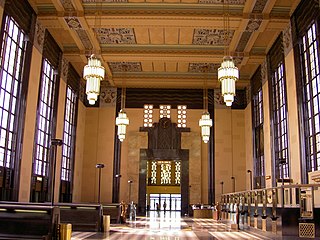
Gilbert Stanley Underwood (1890–1960) was an American architect best known for his National Park lodges. Born in 1890, Underwood received his B.A. from Yale in 1920 and a M.A. from Harvard in 1923. After opening an office in Los Angeles that year, he became associated with Daniel Ray Hull, a landscape architect, of the National Park Service. This led to a commission with the Utah Parks Company of the Union Pacific Railroad which was developing the parks in hopes of producing destinations for travelers. During this time Underwood designed lodges for Cedar Breaks National Monument, Zion National Park, Bryce Canyon National Park, and the North Rim of the Grand Canyon National Park. His surviving Utah Parks Company buildings are considered exceptional examples of the Rustic style of architecture, and are all listed on the National Register of Historic Places. In addition, Underwood was contracted to design Yosemite National Park's The Ahwahnee, also on the National Register and probably his greatest triumph in the Rustic style.

The John C. Pollock House is a historic residence in the city of Wyoming, Ohio, United States. Erected in the 1870s, it was originally the home of a prosperous businessman, and it has been designated a historic site because of its architecture.

The Louis Sawyer House is a historic residence in the city of Wyoming, Ohio, United States. Erected at the turn of the twentieth century, it was originally the home of an important lawyer, and it has been designated a historic site because of its architecture.

Coolmore Plantation, also known as Coolmore and the Powell House, is a historic plantation house located near Tarboro, Edgecombe County, North Carolina. Built in 1858–61, the main house is one of the finest Italianate style plantation houses in the state. The house and its similarly styled outbuildings were designed by Baltimore architect E. G. Lind for Dr. Joseph J.W. and Martha Powell. Coolmore was designated a National Historic Landmark for its architecture in 1978, and is a Save America's Treasures projects.
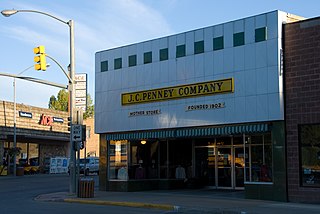
The J. C. Penney Historic District is a historic district in Kemmerer, Wyoming encompassing several properties associated with James Cash Penney (1875-1971). The district includes the Golden Rule Store, the first in what became the J. C. Penney department store chain, and Penney's home during the store's early years. The district was declared a National Historic Landmark District in 1978, for Penney's role in creating one of the first national department store chains.

The Samuel Penney House is a historic house at 78 Maple Street in Mechanic Falls, Maine. The house was completed in 1902 to design by William R. Miller and is considered the finest example of his residential work. It was originally one of three identical houses that stood side by side until the early 1920s. It was added to the National Register of Historic Places in 2002.

St. John's Episcopal Church and Rectory form a complex of log structures in Jackson, Wyoming. The rectory was built first: in 1911 it was a hostel and community center under the supervision of Episcopal Bishop Nathaniel Thomas. Church services were held there until 1916, when the church was built. The church and hostel are among the largest log structures in Jackson Hole.

The Cunningham Cabin is a double-pen log cabin in Grand Teton National Park in the US state of Wyoming. It was built as a homestead in Jackson Hole and represents an adaptation of an Appalachian building form to the West. The cabin was built just south of Spread Creek by John Pierce Cunningham, who arrived in Jackson Hole in 1885 and subsisted as a trapper until he established the Bar Flying U Ranch in 1888. The Cunninghams left the valley for Idaho in 1928, when land was being acquired for the future Grand Teton National Park.

The J. C. Penney Company Building located at 104 S. Rail Street in Shoshone, Idaho, is a historic department store building. It was built in 1918 by stonemason Ignacio Berriochoa.
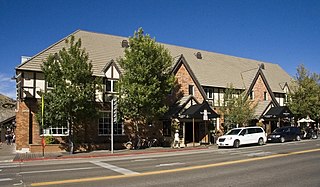
The Wort Hotel was built in downtown Jackson, Wyoming, United States by brothers John and Jess Wort, who were significant figures in the transformation of the economy of Jackson Hole from ranching to tourism. The somewhat Tudor-style building was the first luxury hotel in Jackson. The two-story building features brick facing, with half-timbering and stucco on the second floor and a series of gables facing the street.
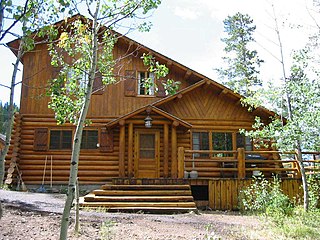
The Brinkerhoff is an historic lodge in Grand Teton National Park on the shore of Jackson Lake. It is the last remaining example of a forest lease vacation lodge in the park. The log house and caretaker's lodge were designed by architect Jan Wilking of Casper, Wyoming and were built in 1946 in what was then U.S. Forest Service land for the Brinkerhoff family. After the creation of Grand Teton National Park, the National Park Service acquired the property and used it for VIP housing. Among the guests at the Brinkerhoff were John F. Kennedy and Richard M. Nixon. The lodge is also notable as a post-war adaptation of the rustic style of architecture. The interior is an intact example of this transitional style.

The Hunter Hereford Ranch was first homesteaded in 1909 by James Williams in the eastern portion of Jackson Hole, in what would become Grand Teton National Park. By the 1940s it was developed as a hobby ranch by William and Eileen Hunter and their foreman John Anderson. With its rustic log buildings it was used as the shooting location for the movie The Wild Country, while one structure with a stone fireplace was used in the 1963 movie Spencer's Mountain. The ranch is located on the extreme eastern edge of Jackson Hole under Shadow Mountain. It is unusual in having some areas of sagebrush-free pasture.

The Worland House was built in 1917 in Worland, Wyoming for local businessman Charlie Worland and his wife Sadie. Worland was the son of C.H. "Dad" Worland, the founder of the town of Worland, and was a noted local entrepreneur.

The J. C. Penney House in Kemmerer, Wyoming was the home of James Cash Penney, the founder of the J. C. Penney department stores, during the 1904-1909 period that he developed his formula for a successful dry goods store. Penney and wife moved to Kemmerer in 1902 and lived in the garret of a small house. With a child, it was too small, and Penney bought this two-story house in 1904. It was small, too: about 25 feet (7.6 m) wide and sloping down to the back, going about 30 feet (9.1 m) deep.

The historical buildings and structures of Grand Teton National Park include a variety of buildings and built remains that pre-date the establishment of Grand Teton National Park, together with facilities built by the National Park Service to serve park visitors. Many of these places and structures have been placed on the National Register of Historic Places. The pre-Park Service structures include homestead cabins from the earliest settlement of Jackson Hole, working ranches that once covered the valley floor, and dude ranches or guest ranches that catered to the tourist trade that grew up in the 1920s and 1930s, before the park was expanded to encompass nearly all of Jackson Hole. Many of these were incorporated into the park to serve as Park Service personnel housing, or were razed to restore the landscape to a natural appearance. Others continued to function as inholdings under a life estate in which their former owners could continue to use and occupy the property until their death. Other buildings, built in the mountains after the initial establishment of the park in 1929, or in the valley after the park was expanded in 1950, were built by the Park Service to serve park visitors, frequently employing the National Park Service Rustic style of design.
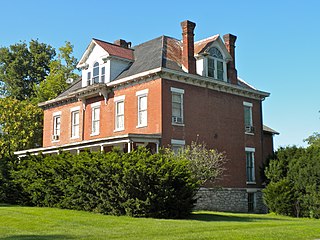
The John N. and Mary L. (Rankin) Irwin House is a historic building located in Keokuk, Iowa, United States. It was individually listed on the National Register of Historic Places in 1999. In 2002 it was included as a contributing property in The Park Place-Grand Avenue Residential District.
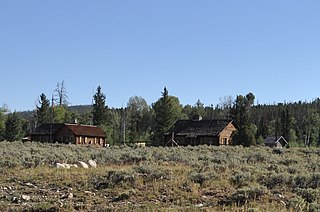
The Brush Creek Work Center in Medicine Bow National Forest near Saratoga, Wyoming is a ranger station of the USDA Forest Service, Region 2 that was built during 1937-41 and is listed on the National Register of Historic Places. It was designed by architects of the United States Forest Service in rustic style. The designs were applications of standard plans.
The John Skillern House is a historic cabin located 25 miles (40 km) northwest of Fairfield in Camas County, Idaho, near the confluence of the Big Smokey and Little Smokey creeks. The cabin was built in 1921-22 for John Skillern and his wife, who used it as a summer home and headquarters for John's large sheep ranching business. Skillern's wife based the cabin's rustic design off of the Old Faithful Inn in Yellowstone National Park, which is reflected in the cabin's steep roof and covered front porch. The cabin's other significant rustic features include its sleeping lofts with pole railings, its horizontal log construction with exposed logs on the inner walls, and its stone chimney.

The Morris Sommer House, at 548 W. 2nd St. in Weiser, Idaho, was built in 1899. It was listed on the National Register of Historic Places in 1982.

The Burton Morse House, at 136 Tenth Ave. N. in Twin Falls, Idaho, was built in 1908. It was listed on the National Register of Historic Places in 1993.





















